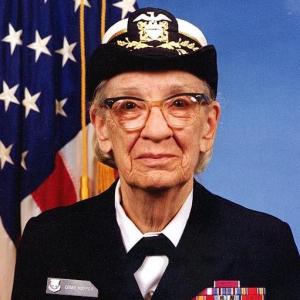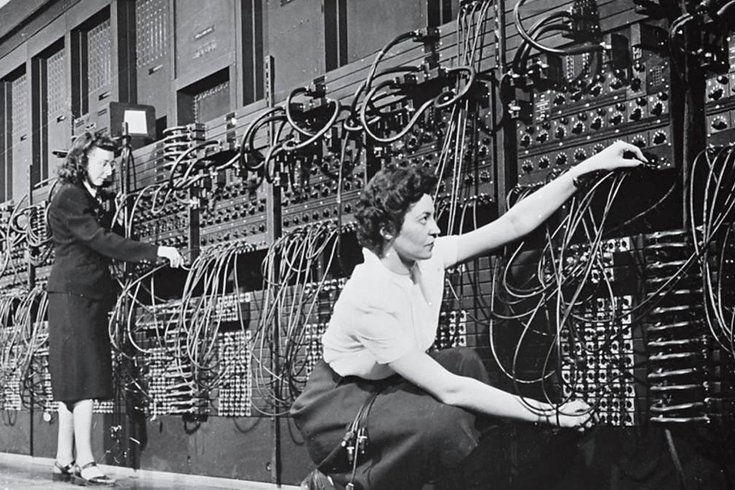A short list of people who we know as Heroes of Information Technology, who contributed a lot in the field of invention and innovation. The ones who took the first steps in creating our world of today. Without them we’d still be stuck in the olden times. Not even knowing the world outside our home and country or the wonders of the world with a push of a button. They’re the ones responsible for our current day to day life. We took a huge leap as a species.
In just a few years we have already achieved a lot in terms of long distance communication, instantly even! We’ve explored the vast world, although a lot of the world is still shrouded in mystery it’s only a matter of time. Our life has changed so much with the new technologies of today and without the people behind the scenes we wouldn’t be standing where we are today. Without further a-do, here’s a short list of those said people.

- Alan Turing – Modern Computing
The persecuted and (eventually) pardoned Alan Turing was the great mind behind the Enigma machine and the development of computing. From the iPad to Facebook, much of the technology we use today can be traced back to Turing’s genius. Mobile phones too owe their existence in part to this great man’s intellect and vision. The creation of the Turing Machine is widely regarded to have been the foundation of modern theories of computation and computability. In fact, he paved the way for all of the unsung heroes we are exploring today. Turing’s vision for the future was radical and before it’s time during the first half of the 20th century. According to the man himself: “It seems probable that once the machine thinking method had started, it would not take long to outstrip our feeble powers… They would be able to converse with each other to sharpen their wits. At some stage therefore, we should have to expect the machines to take control.”

- John Romkey – The Internet of Things
Decades of discoveries and inventions went into the creation of the Internet of Things. From Tim Berners-Lee’s world wide web in 1989 all the way back to Nikola Tesla’s assertion that “When wireless is perfectly applied the whole earth will be converted into a huge brain, which in fact it is, all things being particles of a real and rhythmic whole” in 1926. It was John Romkey, however, who created the very first “Internet Device”; a toaster which could be turned on or off over the internet using a TCP/IP connection in 1990. This invention paved the way for our increasingly connected world, from fridges, which talk to us, to completely hooked up houses you can control from your smartphone. In fact, Fadell’s most recent venture, Nest, owes a debt for the work of Romkey who was one of the first to prove that this kind of connection could be made.

- Marty Cooper – The Mobile Phone
Described as a pioneer and a visionary in the world of wireless technology, Marty Cooper was the very first person to come up with the concept of the truly mobile phone. Developed at Motorola in the 70s, Marty’s mobile is almost unrecognizable when you compare it to today’s smartphones, yet he was one of the first to state that a personal telephone could be: “something that would represent an individual so you could assign a number; not to a place, not to a desk, not to a home, but to a person.” – He even cites Star Trek’s Captain Kirk’s “communicator” as his inspiration.

- Paul Allen – Microsoft
The software giant may be synonymous with Bill Gates, but there is more than one inspiring visionary behind Microsoft. Paul Allen was the company’s co-founder and even coined the world famous Microsoft name. Allen brokered some watershed deals for the company, which led to its omnipresence today, including securing a contract to supply the DOS (Disk Operating System) for IBM’s PC line in the 1980s – a move that would make Microsoft a global name and cement the course of computing for decades.

- Tim Berners-Lee – HTML
While Berners-Lee may not count as an unsung hero for some, there was a shocking reaction from many Twitter users who were unfamiliar with this hero when he was a part of the London 2012 Olympic opening ceremony. Tim Berners Lee is not just responsible for the invention on the World Wide Web. In fact, Berners-Lees extraordinary career also led him to write the international mark-up language HTML (HyperText Markup Language) and the HyperText Transfer Protocol (HTTP) – tools which are now indispensable parts of our everyday, high-tech lives.

- Tony Fadell – The iPod
Anthony Michael “Tony” Fadell is often referred to as the “father of the iPod”. Working in Apple’s iPod division from 2001-2008, Tony created both the concept and the initial design of the world famous iPod. Starting as a lowly contractor, Fadell’s work on the project eventually found him in a Senior Vice President position, with a host of popular devices to his name and his work on the ears of more than 350 million people.

- Susan Kare – Iconographer
Building on the GUI inspired by Adele Goldberg’s team at PARC, the graphic designer Susan Kare is responsible for what remain some of Apple’s signature graphics to this day. First, she took on Steve Jobs’ directive to create a sleeker font for Apple — one that gave each letter its due amount of pixels, and didn’t attempt to make each uniform in the amount of space it took up (like a typewriter).
Kare also developed the idea that the graphics should be easily readable symbols, correlating to real world objects. This resulted in the Apple clock, the pointer finger, the trashcan, and more. Even the Apple “command” key was of Kare’s design, inspired by a Swedish symbol for a castle.

- Adele Goldberg – Researcher in Xerox Palo Alto Research Center
Her work inspired Steve Jobs’ Creation of the first Apple Computer. Without this woman, the apple desktop environment might not look the way it does today.
Goldberg was a researcher at the Xerox Palo Alto Research Center (PARC) in the 1970s. She was the lone woman among a group of men who, together, built the Smalltalk-80 programming language and developed the infrastructure and design for overlapping windows on display screens, or “Graphical User Interface” (GUI).

- Grace Hopper – Mother of Computing
“The mother of computing” also got her start in the military. In the late 1940s, Grace Hopper worked at the Harvard Computation Lab as part of the Navy Reserve, programming the Mark 1 computer that brought speed and accuracy to military initiatives.
Later, she transferred to the Eckert-Mauchly Computer Corp, where she worked as a senior mathematician. She helped develop the UNIVAC I computer, the first business-oriented machine. Her accolades include creating the first compiler: software that translates arithmetic into language and unifies programming instruction. She was one of the architects of a “new compiled computer language” called COBOL, which is still a standard of data processing today. Most notably, she is credited with the idea that computer code could be written and read like language.

- The First Computer Programmer – The Women of ENIAC (Electronic Numerical Integrator And Computer)
In the first half of the 20th century, Harvard’s “computers” grew into a unit of female mathematicians at what would become NASA and its Jet Propulsion Laboratory, working during World War II on behalf of the U.S. Military. The calculations they did plotting ballistic trajectories were time consuming and exceedingly complicated. Two men decided to build a machine that could carry out these calculations. It was called the ENIAC, and it is now considered the first electrical computer.
However, it was the women mathematicians who actually programmed the ENIAC. The ENIAC builders recruited six women who became the world’s first coders, manipulating the ENIAC to calculate missile trajectories.
FOOTNOTE
1. https://www.10zig.com/resources/10zig-in-the-news/6-unsung-heroes-modern-technology
2. https://mashable.com/2018/03/08/unsung-women-in-tech/